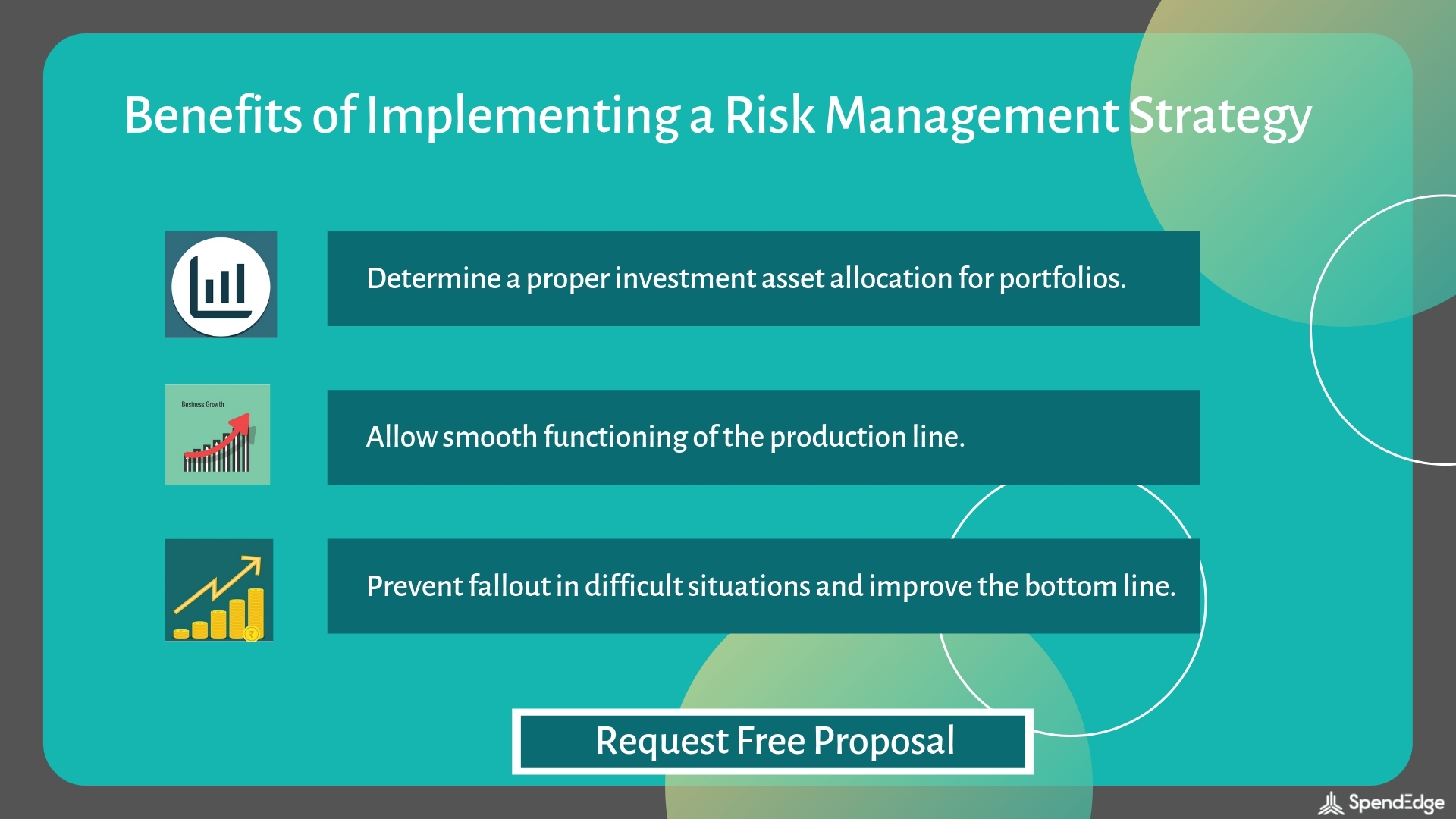Enhancing Operational Efficiency Through the Importance of Risk Management
Enhancing Operational Efficiency Through the Importance of Risk Management
Blog Article
Discovering the Importance of Risk Management for Effective Decision-Making Strategies
In the detailed globe of service, Risk Management emerges as a critical factor in the decision-making procedure. The capability to determine potential threats and chances, and plan as necessary, can spell the distinction in between success and failing. With devices such as SWOT and PESTEL, organizations are outfitted to make enlightened selections, fostering resilience and versatility in an ever-changing environment. Wondering exactly how this works? Allow's unload the characteristics better.
Comprehending the Concept of Risk Management
Risk Management, a vital component in decision-making, is frequently misinterpreted or oversimplified. Usually, it refers to the recognition, analysis, and prioritization of dangers to decrease, keep an eye on, and manage the likelihood or impact of unfavorable events. Nevertheless, it's not just about avoiding unfavorable results, but likewise about identifying prospective possibilities. Risk Management entails regimented and organized strategies, using information and informative assessments. It needs a thorough understanding of the company's context, purposes, and the possible threats that could obstruct them. From financial uncertainties, legal obligations, calculated Management mistakes, to accidents and all-natural catastrophes, it resolves different dangers. Notably, reliable Risk Management is not stationary; it's a continual, progressive procedure that evolves with transforming scenarios.
The Role of Risk Management in Decision-Making Processes
In the world of critical planning and company operations, Risk Management plays an essential function in decision-making procedures. It assists in identifying possible hazards and uncertainties that could affect the success of service objectives. By tracing these risks, business can formulate methods to minimize their influence, making sure service connection and stability. Risk Management therefore becomes an essential device in decision-making, helping leaders to make enlightened selections based upon a detailed understanding of the dangers involved. It motivates a positive technique, making it possible for organizations to prepare for and prepare for feasible future circumstances. This substantially lowers the likelihood of adverse effects, advertising much more efficient and effective decision-making techniques. Consequently, Risk Management offers as a vital element in the decision-making procedures of any organization.

How Risk Management Improves Strategic Planning
In the context of calculated preparation, Risk Management plays a crucial duty. Initiating with the identification of prospective dangers, it better reaches the implementation of Risk mitigation steps. The function of Risk Management is not static however dynamic, as it demands continuous surveillance and adjusting of strategies.
Determining Potential Dangers

Executing Risk Reduction
Risk mitigation methods can range from Risk evasion, Risk transfer, to risk reduction. Each strategy should be customized to the particular Risk, considering its prospective impact and the company's Risk resistance. Efficient Risk mitigation requires a deep understanding of the Risk landscape and the possible influence of each Risk.
Surveillance and Adjusting Approaches
Though Risk view reduction is an important step in tactical preparation, continual monitoring and modification of these techniques is equally vital. It also provides a chance to review the success of the Risk Management actions, enabling changes to be made where necessary, further boosting critical preparation. Tracking and changing Risk Management strategies is an important element for improving a company's durability and tactical preparation.
Instance Studies: Effective Risk Management and Decision-Making
On the planet of service and money, effective Risk Management and decision-making frequently work as the columns of prosperous ventures. One such entity is a multinational oil firm that reduced financial loss by hedging against changing oil rates. In one more instance, a technology start-up flourished by determining and approving risky, high-reward strategies in a volatile market. An international bank, confronted with governing uncertainties, effectively navigated the circumstance through proactive Risk analysis and dynamic decision-making. These cases highlight the value of astute Risk Management in decision-making procedures. It is not the absence of Risk, but the Management of it, that often differentiates effective firms from not successful ones. These situations emphasize the critical function of Risk Management in tactical decision-making. importance of useful reference risk management.
Devices and Strategies for Efficient Risk Management
These tools, such as Risk signs up and heat maps, aid in determining and assessing possible risks. Risk response strategies, a crucial component of Risk Management, involve approving, avoiding, moving, or mitigating risks. With these devices and methods, decision-makers can navigate the facility landscape of Risk Management, therefore assisting in educated and efficient decision-making.
Future Trends in Risk Management and Decision-Making Strategies
As we check out the huge landscape of Risk Management, it ends up being evident that the devices and methods made use of today will remain to progress. Future patterns direct towards a raised reliance on modern technology, with man-made intelligence and maker knowing playing significant roles. These technologies will allow companies to predict potential risks with greater accuracy and make more informed choices. In addition, there will certainly be an expanding emphasis on strength, not just in handling dangers yet likewise in recovering from damaging circumstances. Lastly, the idea of Risk society, where every participant of an organization realizes and associated with Risk Management, will acquire much more prominence. These trends herald an even more aggressive and comprehensive approach towards Risk Management and decision-making.
Final thought

Risk Management hence ends up being a crucial tool in decision-making, helping leaders to make informed selections based on a detailed understanding of the dangers included. Risk mitigation methods can vary from Risk evasion, Risk transfer, to run the risk of decrease (importance of risk management). Reliable Risk reduction requires a deep understanding of the Risk landscape and the prospective impact of each Risk. Risk feedback methods, a crucial element of Risk Management, involve accepting, preventing, moving, or mitigating dangers. The idea of Risk society, where every index participant of an organization is conscious and included in Risk Management, will certainly obtain more prestige
Report this page